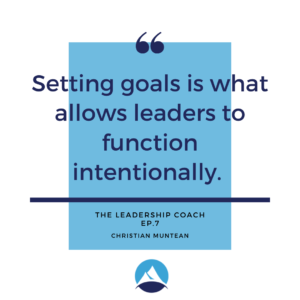How To Get Out of Your Own Way: 5 Tips for Change


In this article, I’ll talk about how many of the limits we experience in life are actually self-imposed. That’s good news because it means that we have the ability to change. I explore what these limits look like and practical ideas to remove them.
I’ve mentioned in previous articles that I’m teaching my boys to rock climb. When kids (or must adults for that matter) start to climb, they will often only go so high and then stop. They have great handholds and footholds. But something in them is screaming, “You are too high! You are going to kill yourself! You won’t survive the fall!”
The initial challenge, when teaching my boys to climb, isn’t about teaching skills or even fitness. It’s about training their brains to believe they can do it. They can climb. They can make it to the top.
Success is in your head.
I love the mental game of fitness and athletics. One of the most important aspects of this game is learning to recognize and overcome self-imposed limits. It’s challenging because these limits are usually subconscious and sometimes even feel physical.
Each of our brains has an internal sense or marker for how much effort or stress our bodies can handle. When we start to put in effort towards those limits, the brain sends signals telling you, “You are too tired! This is too much! You want to quit! No, you need to quit!” This signal can actually be felt physically as well as emotionally. Which is why most people think, “I can’t (fill in the blank).”
But the reality is that our brains don’t calibrate to our actual abilities. Instead, they calibrate to some of our strongest experiences and deep-set beliefs. In reality, the stopping point in most people’s brains is far below their actual capacity.
When it comes to fitness or athletics, the toughest part of the body to train is the brain. It’s also the most important part.
This is true in leadership as well.
About six years ago, I completed my first GORUCK Challenge. It’s an intense 12-hour team endurance event designed to simulate the beginning of the Special Forces selection process. I ended up completing it twice and training others to successfully complete it as well.
One of the biggest lessons of the GORUCK Challenge is that quitting happens in your head. If you don’t let yourself quit mentally, you’ll be fine. Or at least you’ll finish (they never promise that you’ll be “fine”!).
Everyone who goes through a GORUCK Challenge will tell you that their sense of what they can endure and accomplish expands dramatically as a result. This isn’t only true for endurance. It’s true for strength. It’s true for skills like martial arts or even dancing. The biggest obstacle is almost never physical. It is nearly always mental.
The best athletes and fittest people are people who have trained their brains to let go and let their bodies do what they can actually do.
What does this have to do with leadership?
The biggest challenges that leaders deal with are in their heads. When I work with leaders, the issues that come up, again and again, are the result of self-imposed limits.
I’m afraid of having that conversation.
I can’t manage that level of complexity.
I don’t think I can live up to these expectations.
I don’t deserve to be here.
These are common thoughts running around in the heads of smart and capable leaders. You had better believe that those thoughts create real limits.
The good news is, because these limits are largely self-imposed, they can be lifted.
What causes self-imposed limits?
We all have an internal thermostat that tells us how “hot” we can get. When we start to excel or succeed above that level, something in us self-corrects and “cools” us down back to the temperature we’ve learned is normal.
Additionally, if things start to “cool” off too much, something self-corrects and we warm back up to normal.
The problem is our “normal temperature” settings are usually too low. They are rarely where we actually want to be in our relationships or accomplishments. In spite of high hopes or dreams, our default settings are usually too low.
This thermostat is largely set during our childhood. Then it is reinforced as we go through life. We are taught or we learn what is “possible” both in life and for ourselves. Few of these lessons are taught overtly. Instead, we learn them by listening to other people’s cynicism, pessimism, or frustration. We experience setbacks or challenges. We have failures. We learn, “I can’t.”
The cycle gets very vicious and self-reinforcing. Our own self-imposed limits start to “teach” us what our limits are. We learn: “Beyond this line, I will not succeed.” As a result, we don’t act in ways that allow success. So, we don’t experience success, which proves we can’t succeed.
Before long, we don’t even consciously think, “I can’t do that.” But we just don’t do it. We don’t even try. We come up with excuses, let ourselves get distracted, or even self-sabotage the experience.
Five tips to reset your thermostat.
Years ago, I discovered I had a financial setting on my “thermostat.” It said, “You will never generate more than $X in revenue.” I’m not sure where that message came from. But I discovered that year after year, I was always within about 15% of that amount. I wanted it to change. I actually needed it to change. But I didn’t know how to make it change.
Finally, I started working with a coach who immediately spotted this “setting”, or mindset. He started me on the process of resetting my thermostat. I can’t overstate it: changing my thermostat changed my life.
Here are five tips that will help you reset your thermostat:
- See yourself differently. You have to create and accept an image of yourself that includes a higher level of success. Whatever success means to you.
Lest you think this seems “self-focused”, consider this: You can’t build a better marriage if you don’t believe you can be a good spouse in a loving marriage. You can’t build a healthier organization if you don’t believe you have influence and can impact results.
You’ll act in accordance with how you see yourself. So, begin to imagine yourself as the person you want to become. Specifically, how that person acts. Write this down. Review it regularly. Change your story about yourself.
- Keep the promises you make to yourself. You don’t rely on people you can’t trust. How much worse is it if you don’t trust yourself?
Keeping your promises eventually teaches you that, “I’ve succeeded in the past. I’m succeeding now. I’ll succeed in the future.” You can only learn those lessons if they are true. Which requires action and follow through. Make your bed, get to the gym, finish that project. Keep your promises to yourself.
Your self-image is largely shaped by the degree to which you trust and believe in your own abilities. Keep your promises. Follow through.
- Pursue challenges. Don’t go easy on yourself. Set challenges. Your challenges don’t have to be dramatic. But they should push you beyond what you’ve accomplished before. They should push you forward. They should take effort. There should be some risk. This is called ambition. According to the Mirriam Webster dictionary, antonyms of ambition include:
Lethargy, passivity, laziness, inertia, inactivity.
You can’t lead without ambition. You can’t even be a healthy human without ambition. So, challenge yourself. If you only set goals that are easy for you to accomplish, then you never teach yourself to stretch or dream or try. To be healthy, we need to try. We need to reach. We need ambition.
- Surround yourself with others who succeed. If you want to be a better musician, spend time with gifted musicians. If you want to be a better listener, spend time with great listeners. If you want to be a better leader, spend time with excellent leaders who are succeeding in areas you’d like to succeed in. Maybe they are great mentors, or creative entrepreneurs, or skilled negotiators, or excellent employers.
Jim Rohn used to say, “You are the average of the six closest relationships in your life.” Who are the six people you are closest to? Make sure that the results they experience in life and how they relate to others is what you aspire to. Not settle for.
- Get help. Everything really began to change for me when I hired a coach who zeroed right in on my mindset. Nearly every year since then, I’ve worked with some kind of coach. Perhaps you’d benefit from working with a counselor. Get a counselor. Do your work.
But even if you can’t hire someone, you can find mentors. It’s easy to invite someone out to lunch and ask a few questions. You don’t have to call them a “mentor.” But you can call them.
Don’t leave your future to chance.
Reset your thermostat. Don’t let others set it for you. Don’t let your past limit your future.
Take good care,
Christian
Would you like my help for yourself, your team or board to get a clear vision of 2020? Don’t leave it to chance. Give me a call 907-522-7200 or e-mail me.
NEW FREE TOOL: The Value Builder System
Are you curious about the value of your company? The Value Builder System™ is a 13-minute online questionnaire that evaluates your business on the eight factors that contribute more to its attractiveness and value. These factors are scored on a scale of 1-100. Businesses that score over 80 are likely to command 70%-100% higher value than others. Click here to learn more or get your free Value Builder Score.
 I have a new podcast, THE LEADERSHIP COACH, where we explore effective, high impact and enjoyable leadership. We talk about personal development and the attributes that all effective leaders possess. I interview other leadership experts who share their knowledge and tips to help you build the confidence to lead and learn the habits of good decision-making. Episode #7 is available now.
I have a new podcast, THE LEADERSHIP COACH, where we explore effective, high impact and enjoyable leadership. We talk about personal development and the attributes that all effective leaders possess. I interview other leadership experts who share their knowledge and tips to help you build the confidence to lead and learn the habits of good decision-making. Episode #7 is available now.
Opportunities
Did someone send you this article? You can receive it, free, directly from me each week. Click here to sign up. You can unsubscribe at any time. I won’t feel too hurt.
Free Resource: How To Accomplish More Without Doing More is a workbook I created to walk leaders through a process of helping you own your calendar, liberate your time, and still get more done. Download it for free!
Executive and Leadership Coaching: Do you feel overwhelmed? Are you not getting the results you expect from the effort you are putting in? Do you find yourself facing similar challenges time and time again? Would you like to change specific ways of relating or reacting? If you would like to experience predictable, measurable growth Contact me.
Profitable Exit Strategy Workshop: Are you a business owner or partner? Are you over 55? Are you starting to think about exiting your business or active management in the next 3-5 years?
- Are you curious about what your business might be worth?
- Would you like to discover the specific steps you need to take to increase its value and become highly attractive to a buyer?
- Are you planning on handing it over to family or employees and you want to ensure long-term success?
If so, contact me now.
Article Categories
Popular articles

Download my free 10-page eBook:
How To Accomplish More Without Doing More:
Eight Proven Strategies To Change Your Life
Discover how to save eight hours during your workweek-even if you're too busy to even think about it. The resource every maxed out executive needs.